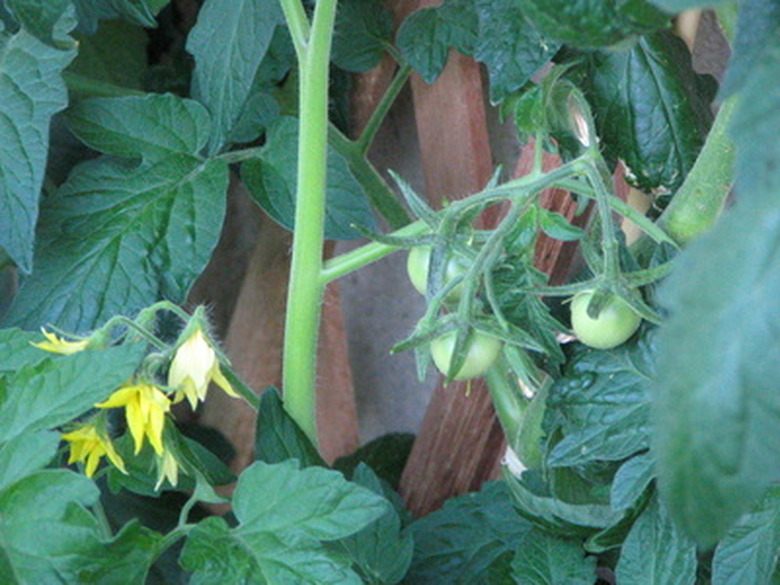How To Increase Flowers On Tomato Plants
Growing an abundant crop of tomatoes in the home garden requires healthy plants with plenty of blossoms. Each blossom on the plant that is pollinated will grow into a single tomato fruit; so, the more blossoms on your plant, the more chances for ripening tomatoes. While not all the flowers will be pollinated, tomatoes are self-pollinating which increases the chance for fruit with little help from you or insect pollinators as long as there are plenty of flowers. Ensuring that all the plant's needs are met helps increase the amount of tomato blossoms produced.
Step 1
Plant tomatoes in a well-drained garden bed that receives at least 8 hours of sunlight a day. Plant them outside once the soil has warmed to at least 60 degrees F and there is no more danger of frost in spring.
Step 2
Water the plants regularly, providing 1 to 2 inches of water once a week. Irrigate in the morning so the moisture doesn't evaporate and provide the water directly to the base of the plant to encourage maximum uptake of moisture. Apply a 2-inch layer of mulch around the plants to help preserve soil moisture.
- Growing an abundant crop of tomatoes in the home garden requires healthy plants with plenty of blossoms.
- Irrigate in the morning so the moisture doesn't evaporate and provide the water directly to the base of the plant to encourage maximum uptake of moisture.
Step 3
Fertilize tomatoes at planting with a tomato fertilizer, and fertilize a second time when they begin setting fruit. Avoid over-fertilizing or fertilizing with nitrogen-only products as this may lead to abundant foliage but few flowers. A balanced 10-10-10 analysis fertilizer is suitable for tomatoes.
Step 4
Apply fertilizer to the soil 6 to 8 inches away from the plant. Avoid getting fertilizer on the leaves as this may damage the plant leading to both flower and leaf loss.
Step 5
Install a stake or use a tomato cage to support the tomato branches. Tie plants to stakes above the blossoms, otherwise the plant ties may strip off the flowers if the plant sags.
- Fertilize tomatoes at planting with a tomato fertilizer, and fertilize a second time when they begin setting fruit.
- Avoid getting fertilizer on the leaves as this may damage the plant leading to both flower and leaf loss.
Step 6
Harvest the fruit as soon as it ripens. Tomatoes are ripe when the fruit reaches its full color and feels firm. Frequent harvesting leads to further blossoming and fruit set.
Tip
When temperatures are above 95 degrees F or below 55 F, some blossom drop may occur. The plants will begin blooming again once temperatures turn to the correct range again. Purchase healthy seedlings or start seeds inside before transplanting to the garden bed. These plants go outside healthier than those seeded directly in the garden, making them more likely to bloom profusely.
Warning
High winds can lead to flower drop. Plant tomatoes in an area where they are protected from the heaviest wind.
Things Needed
- Mulch
- Fertilizer
- Stake
- Plant ties
